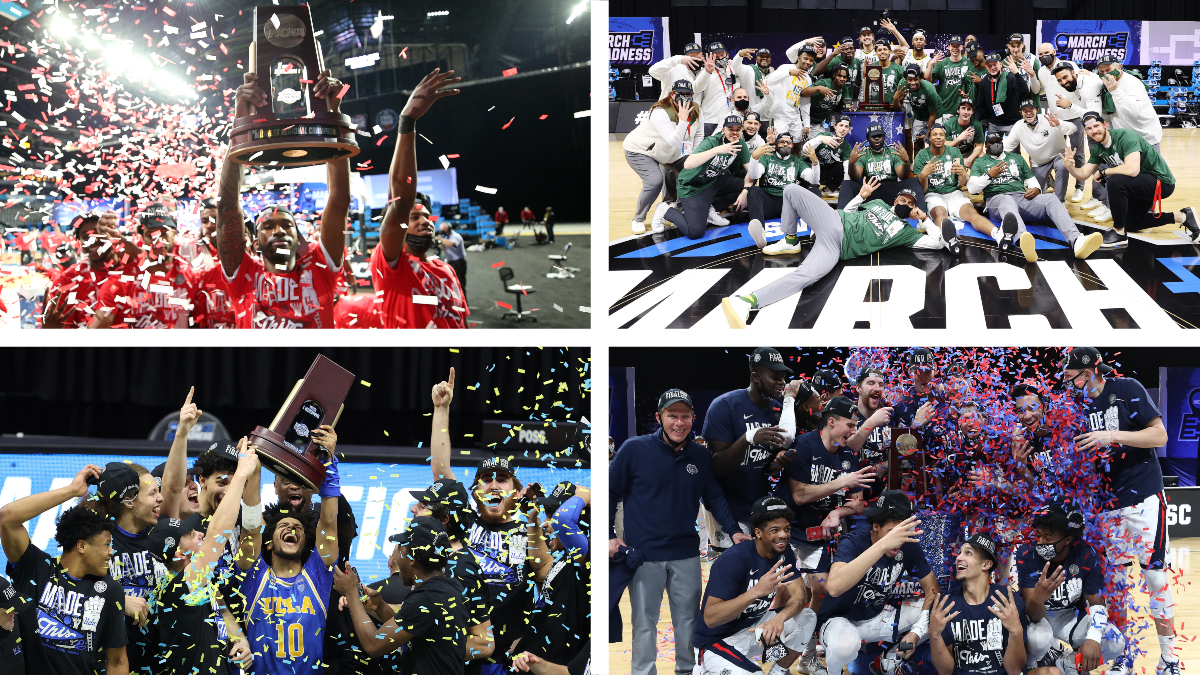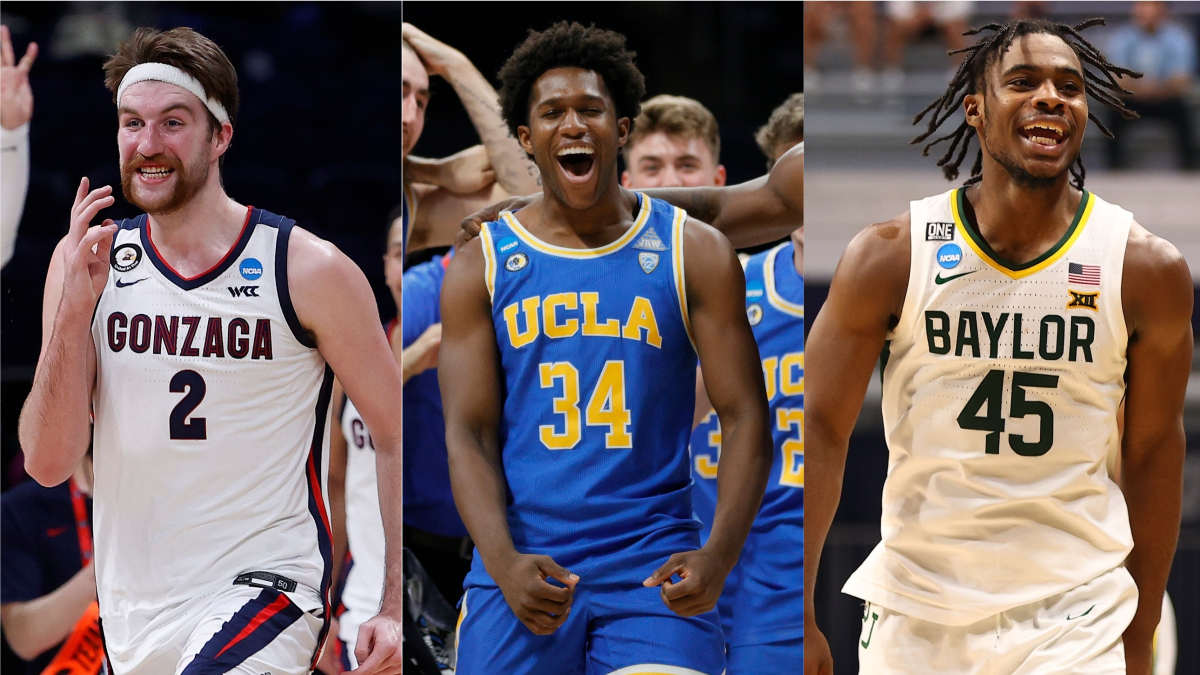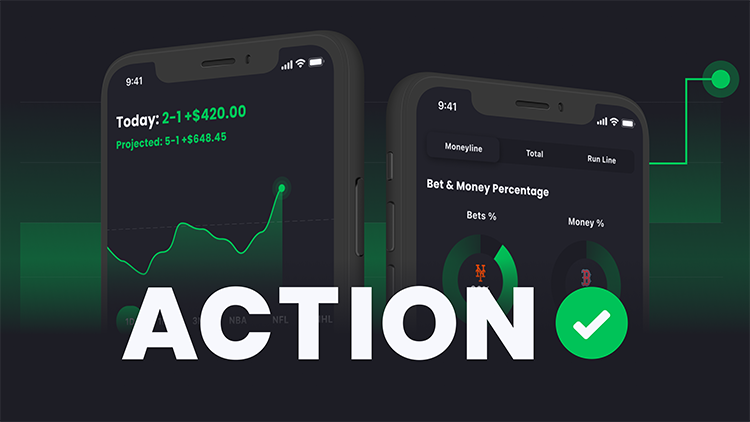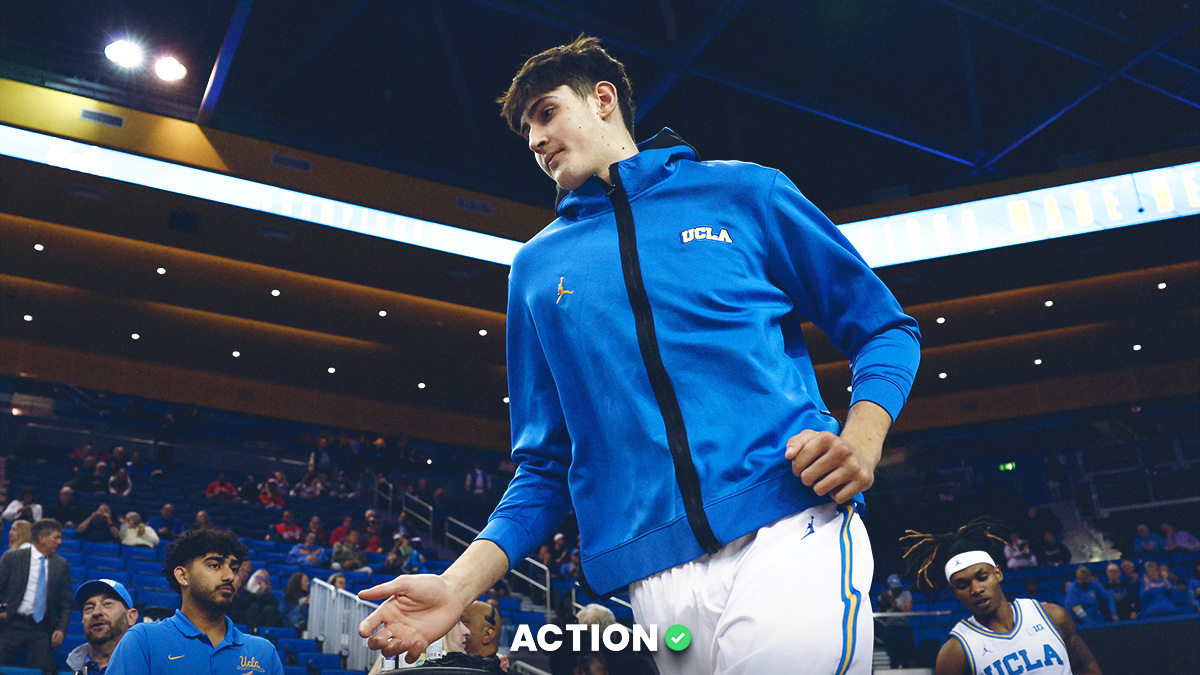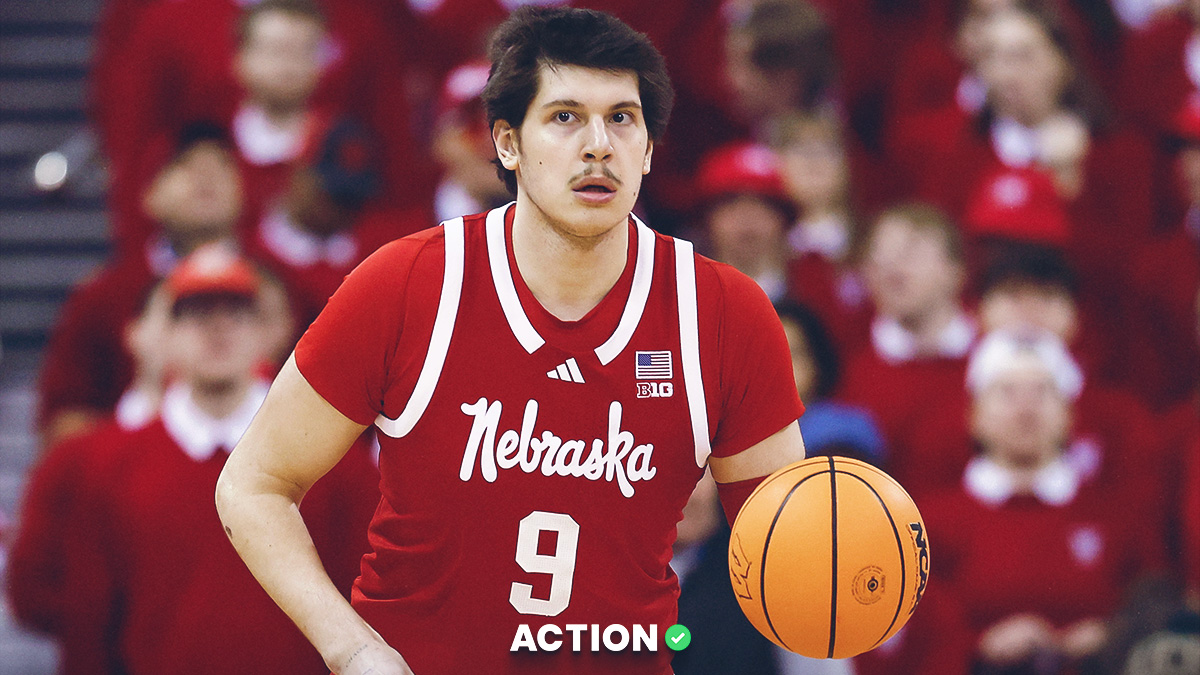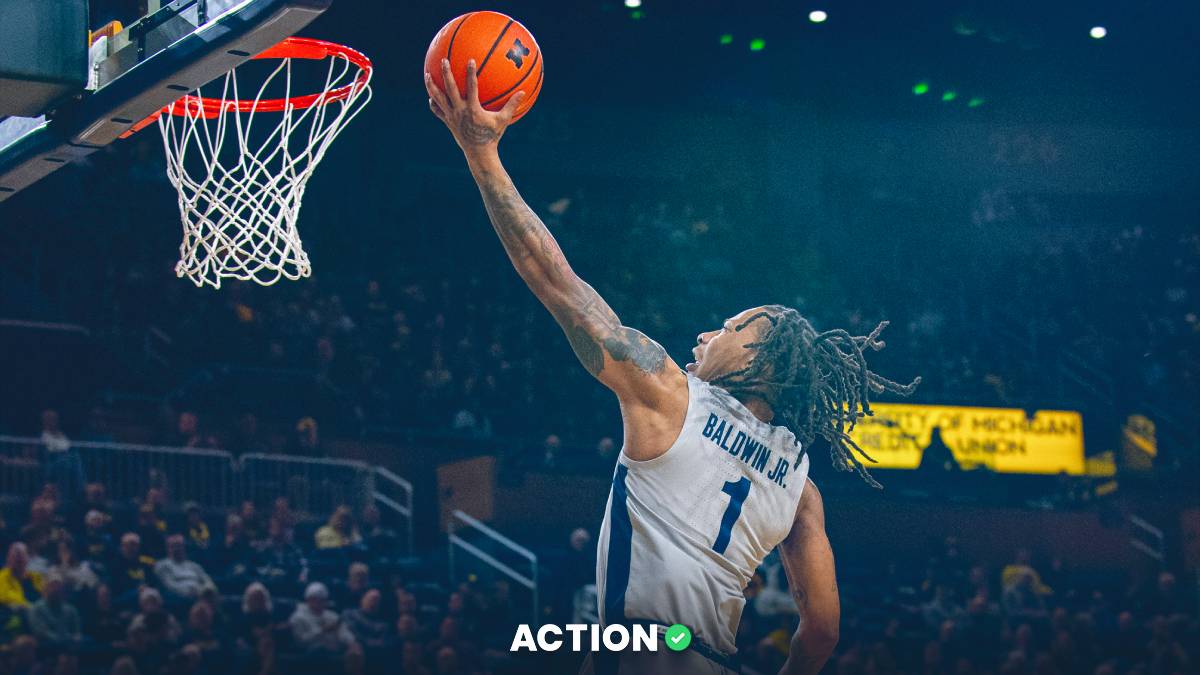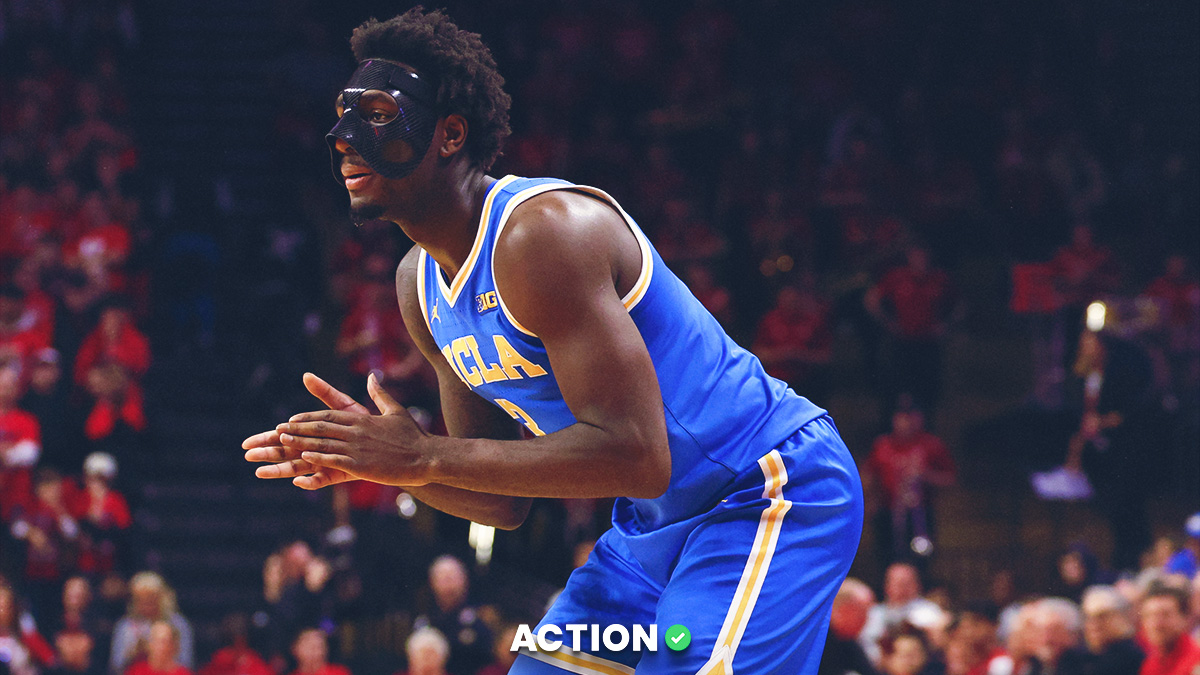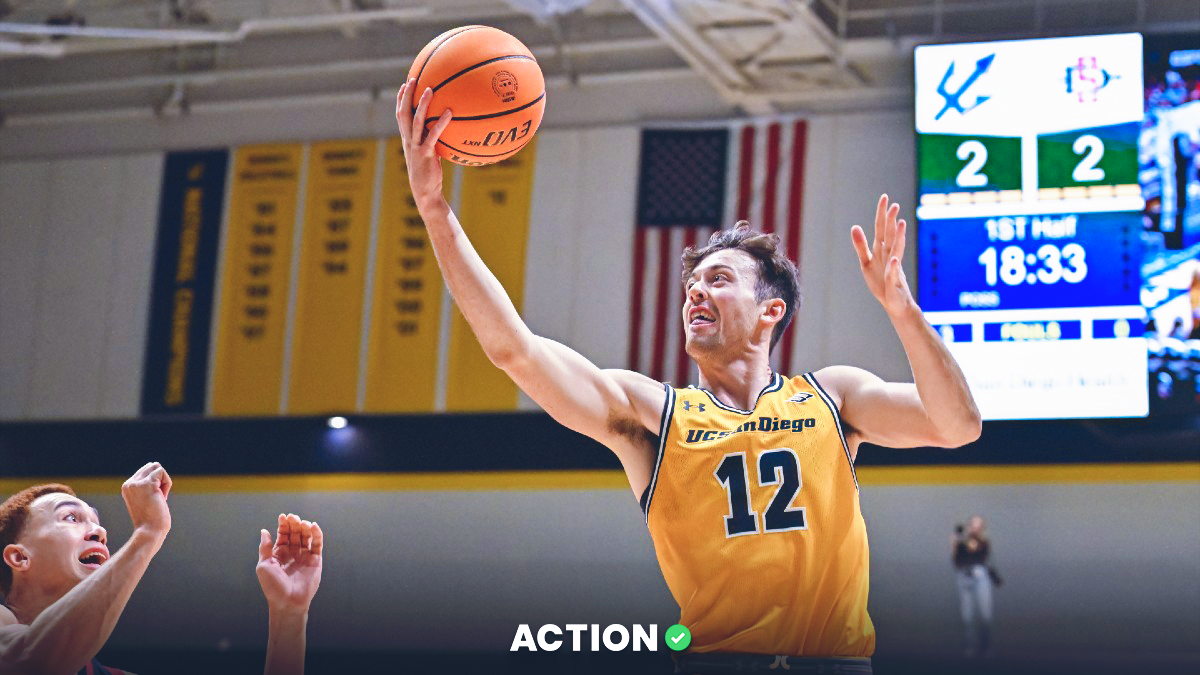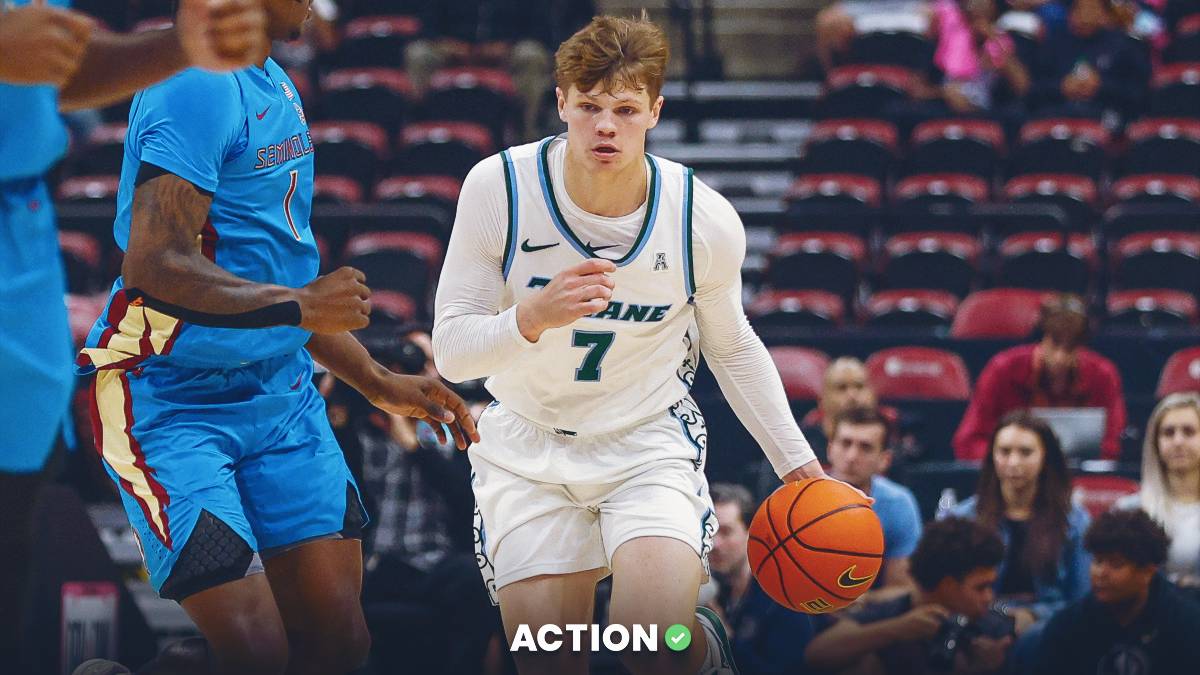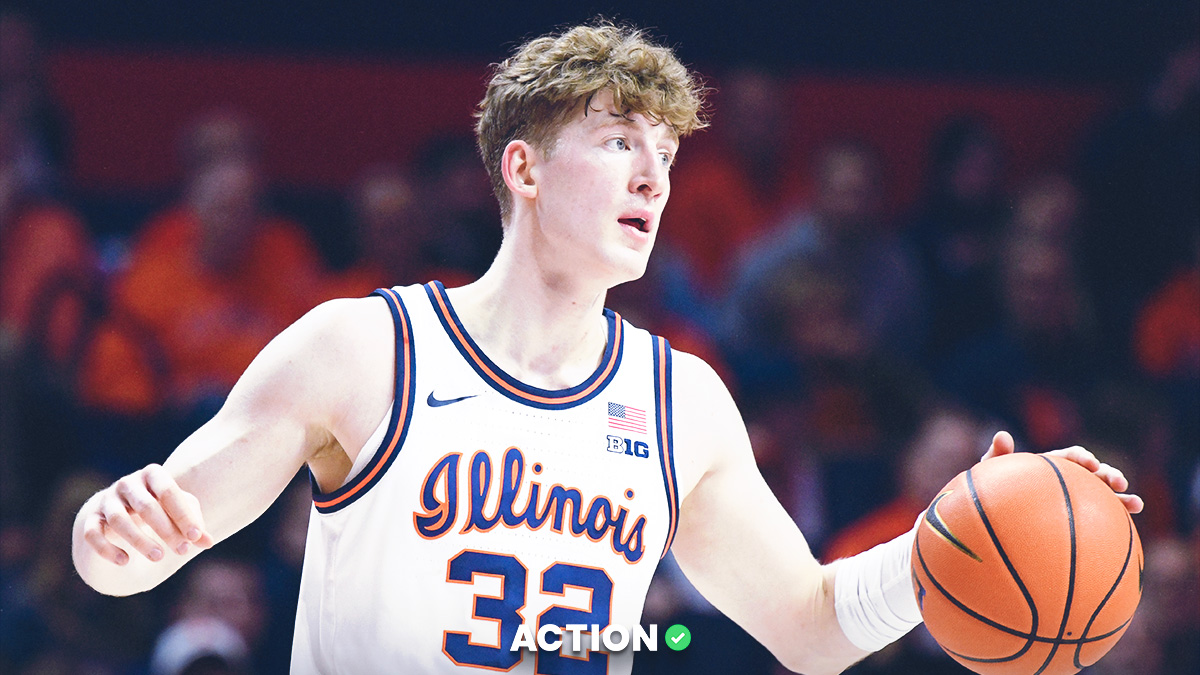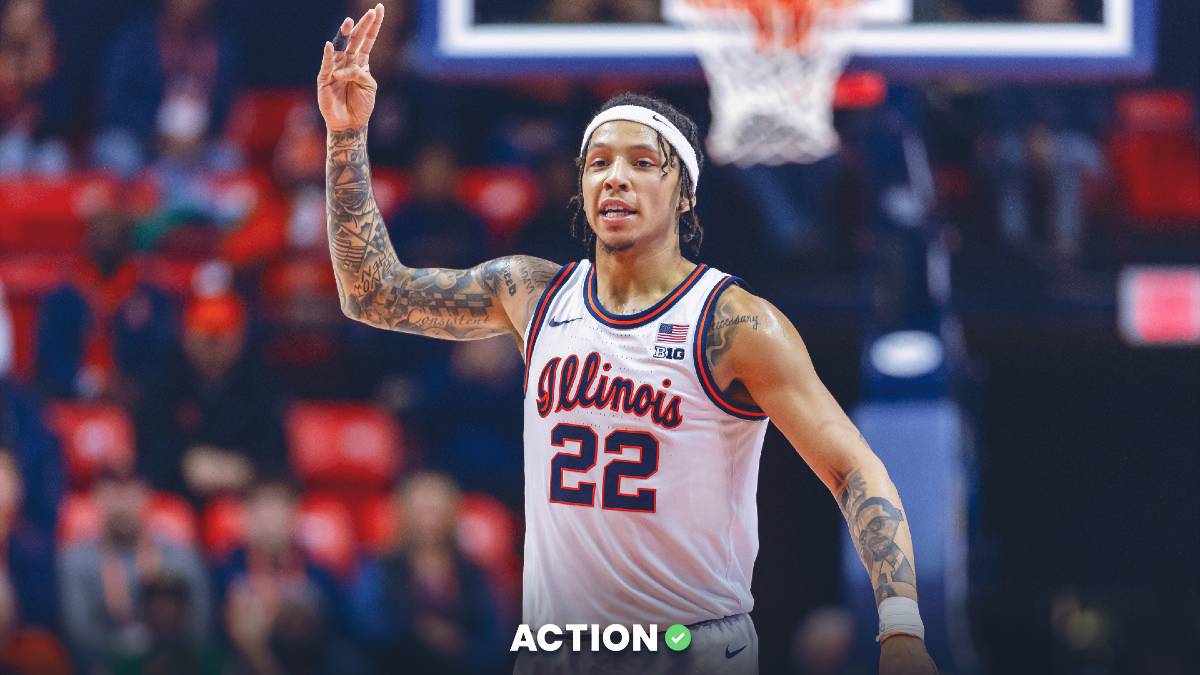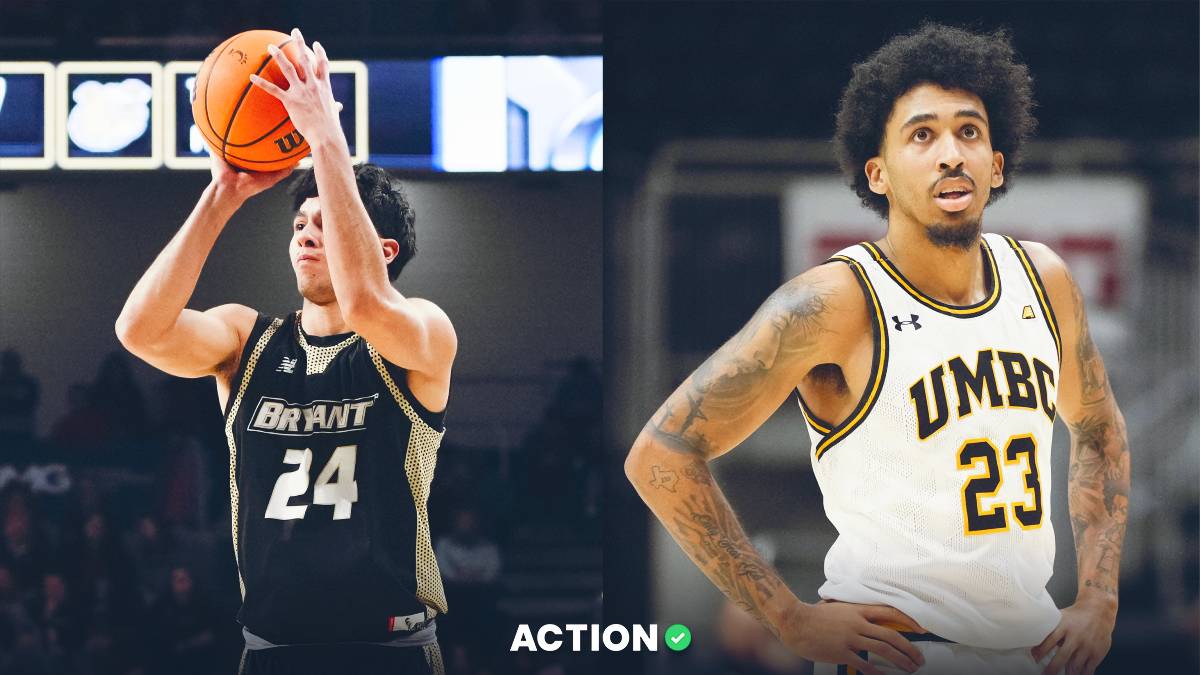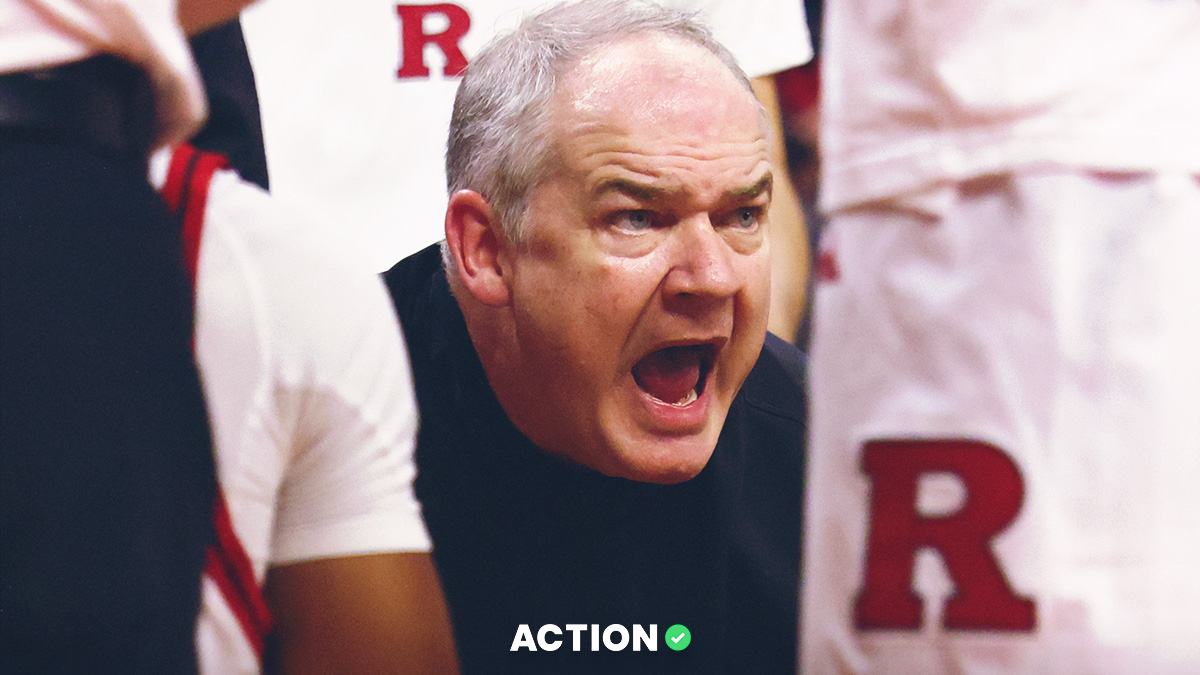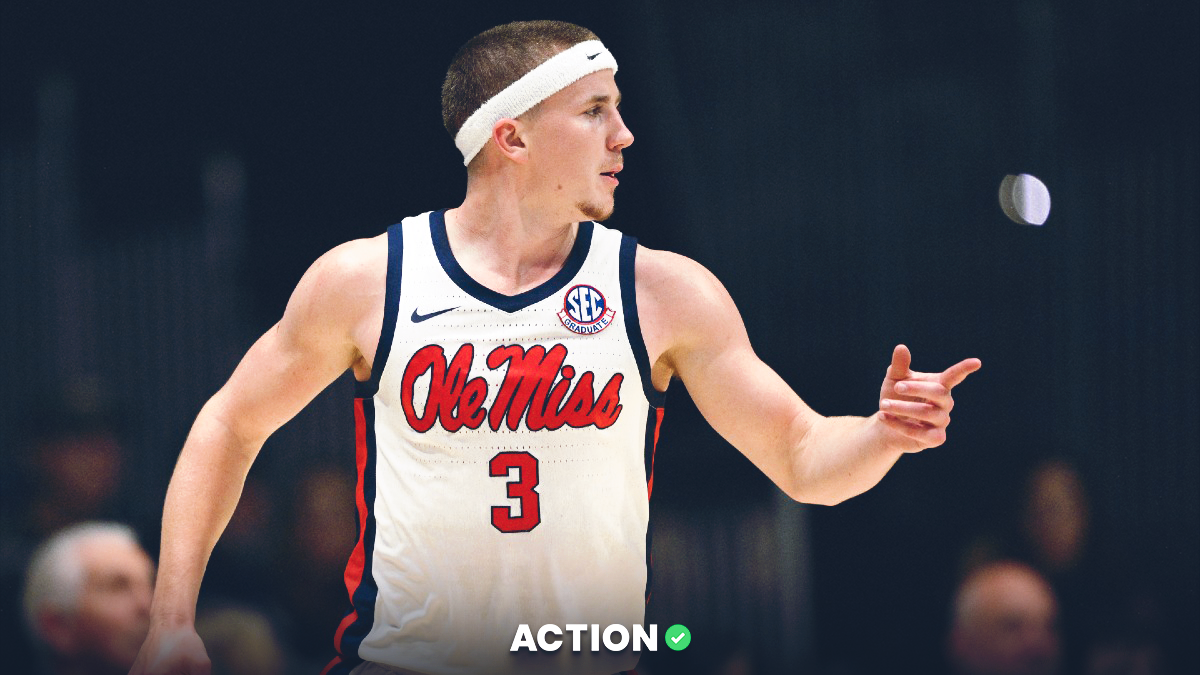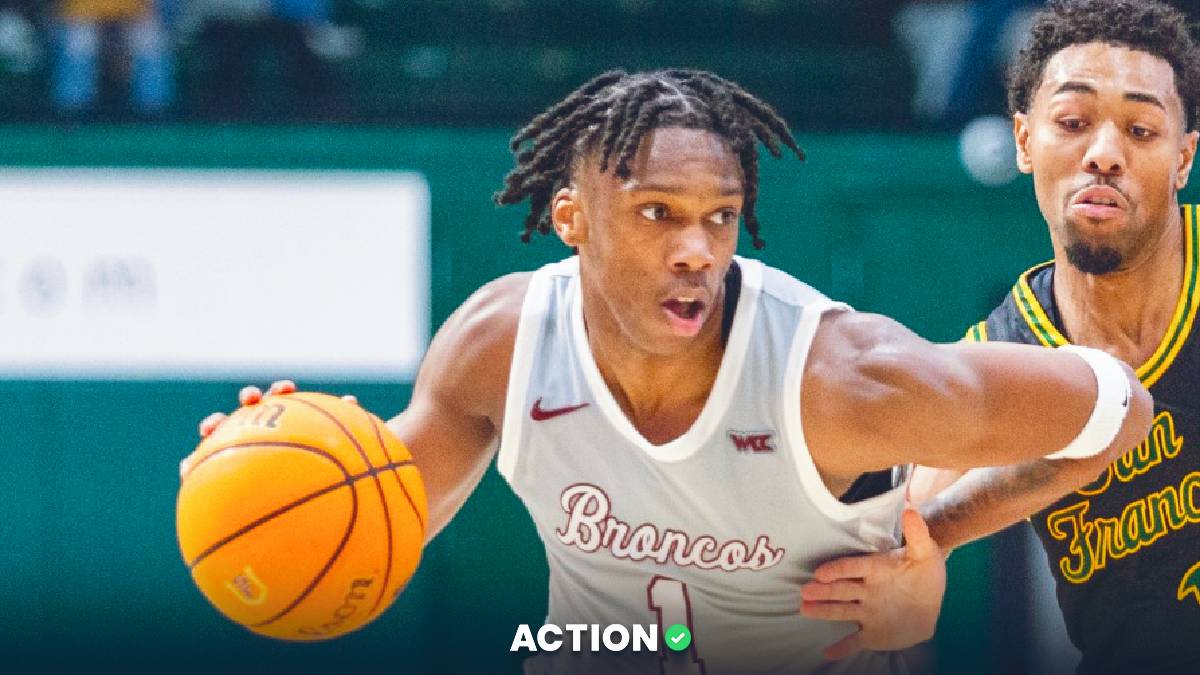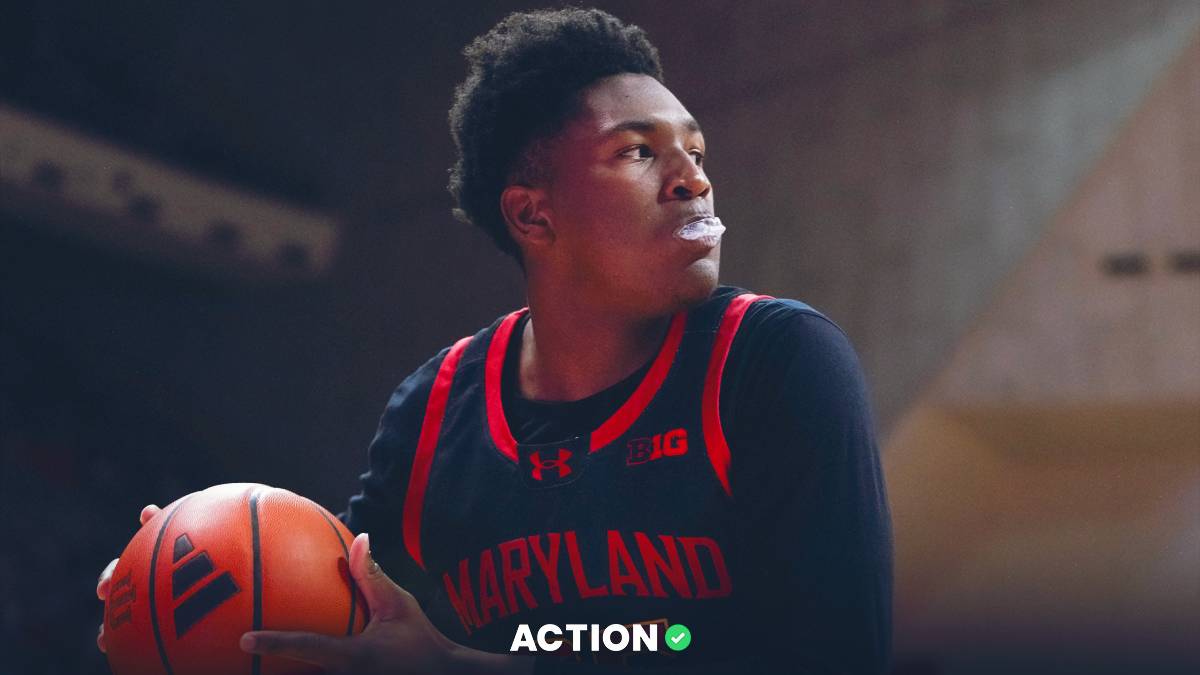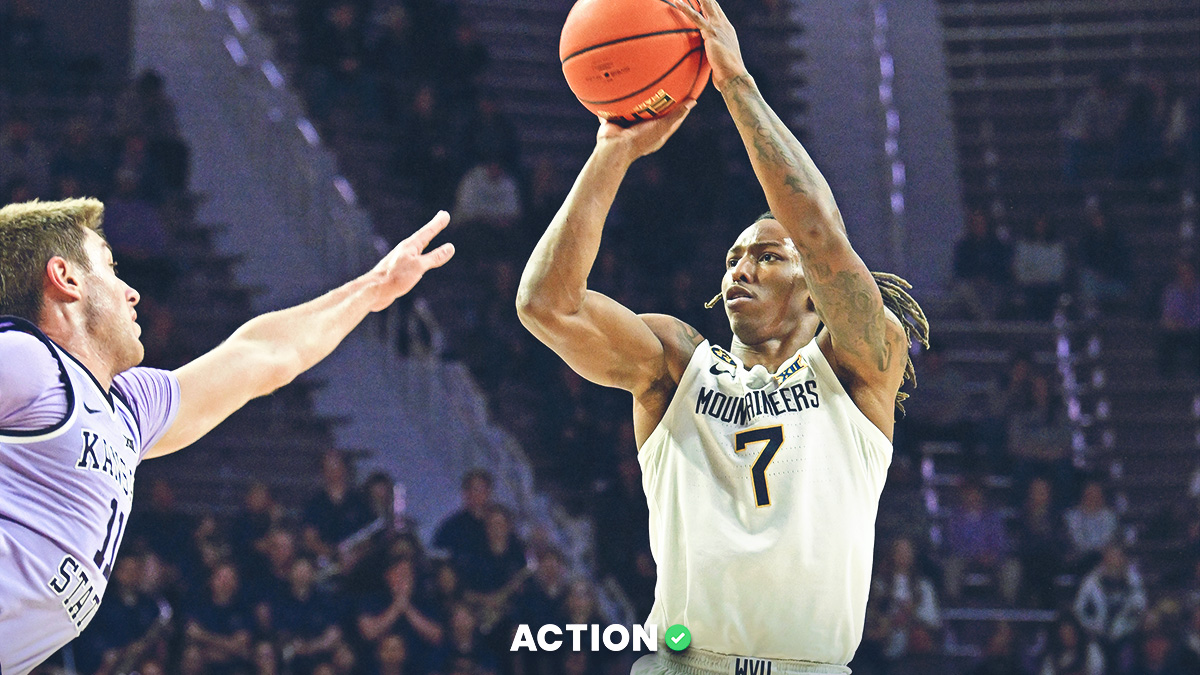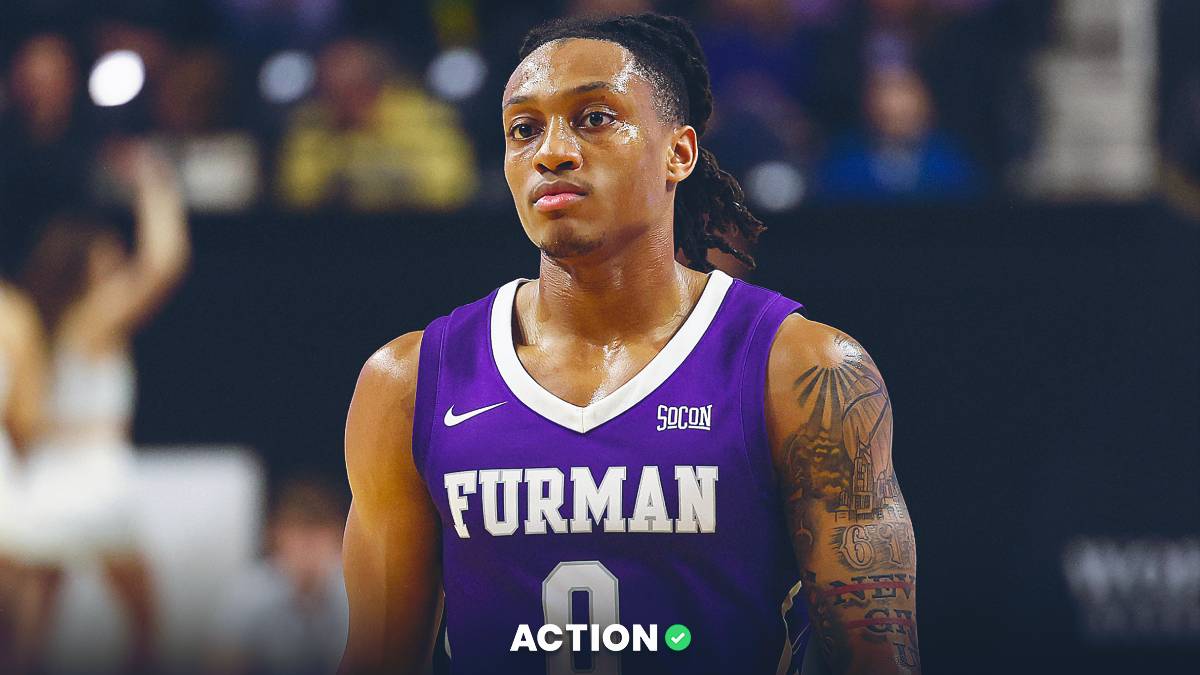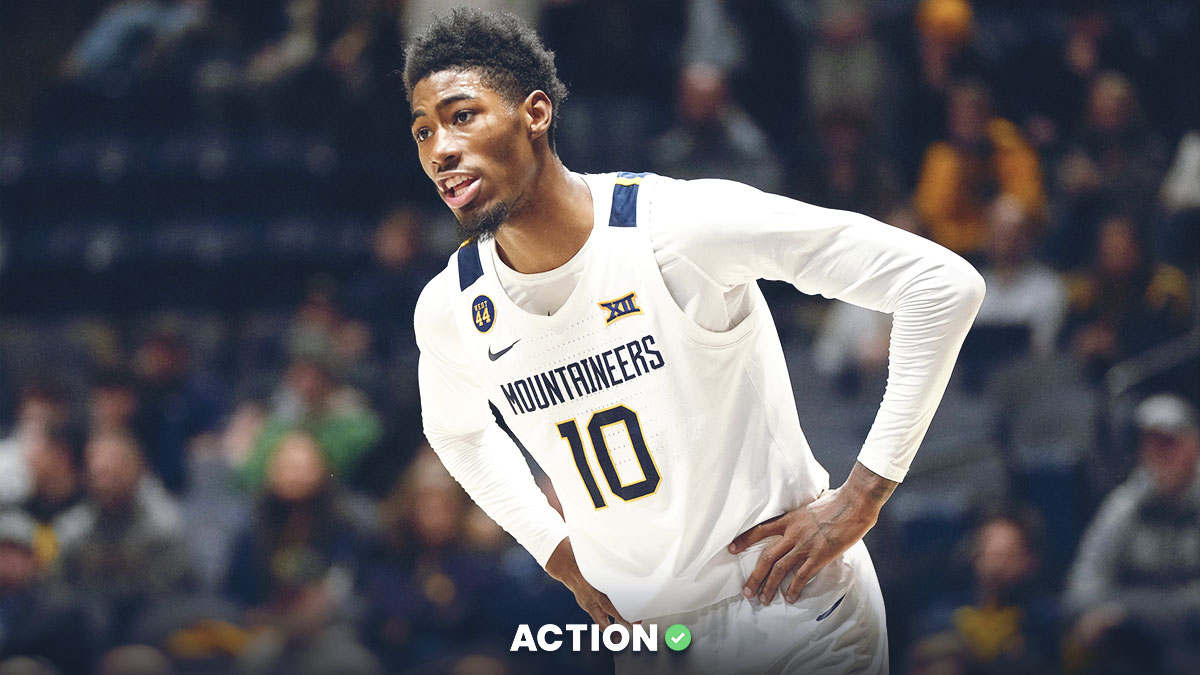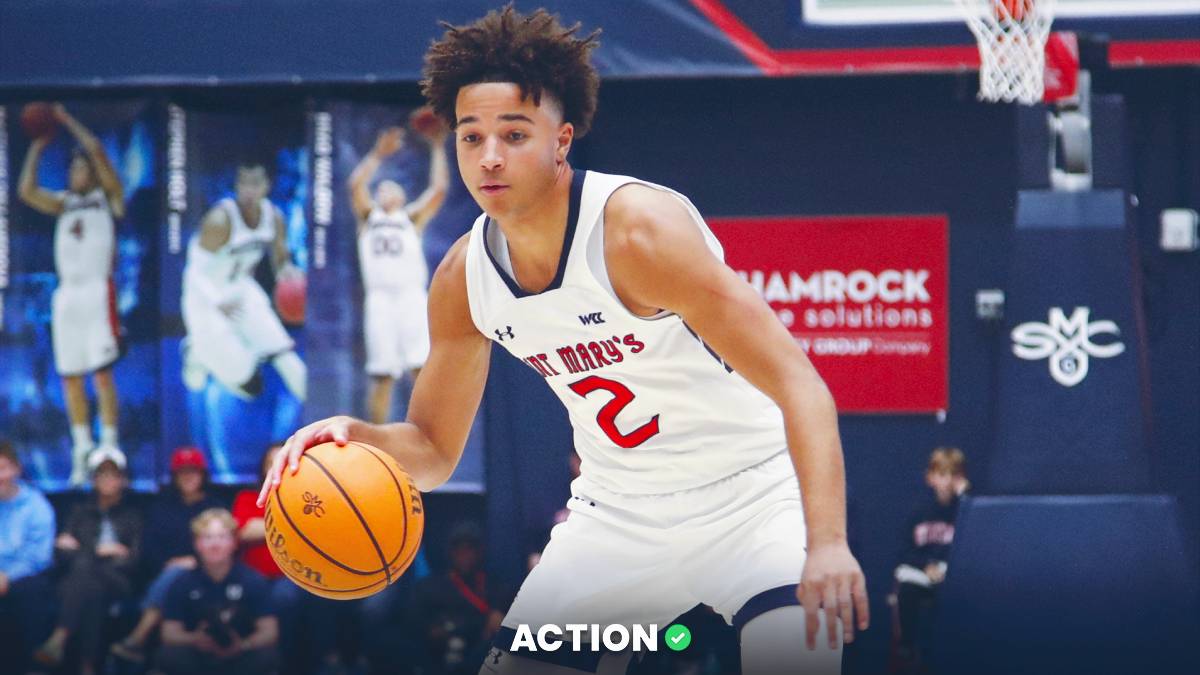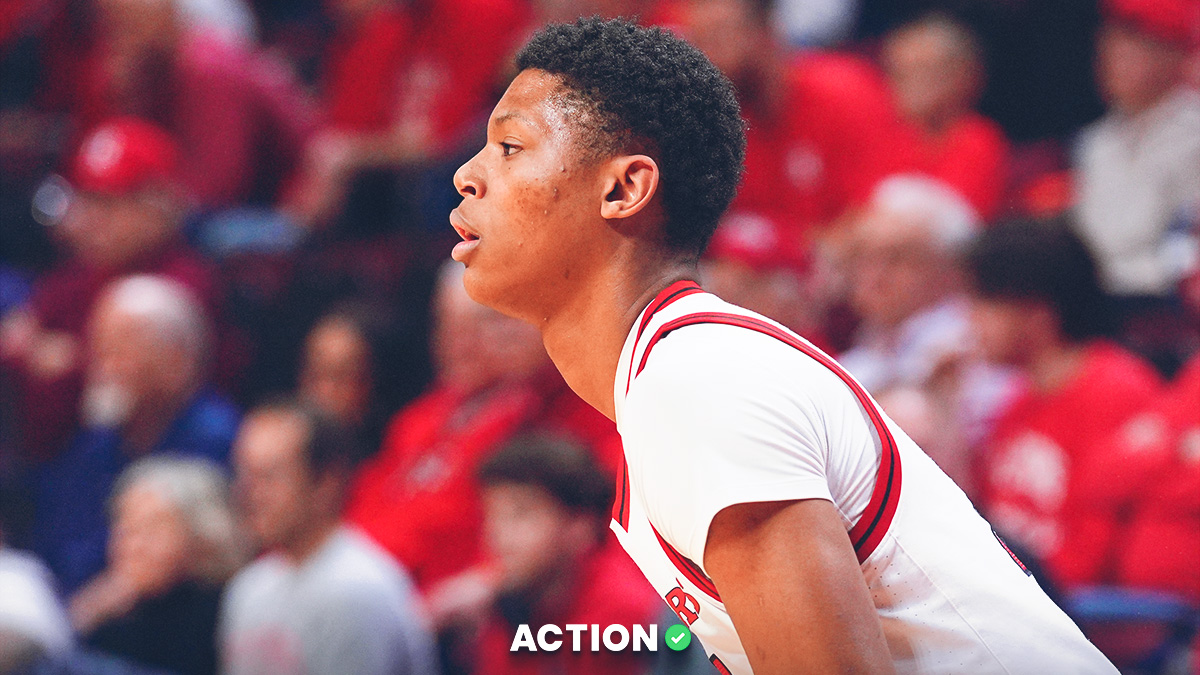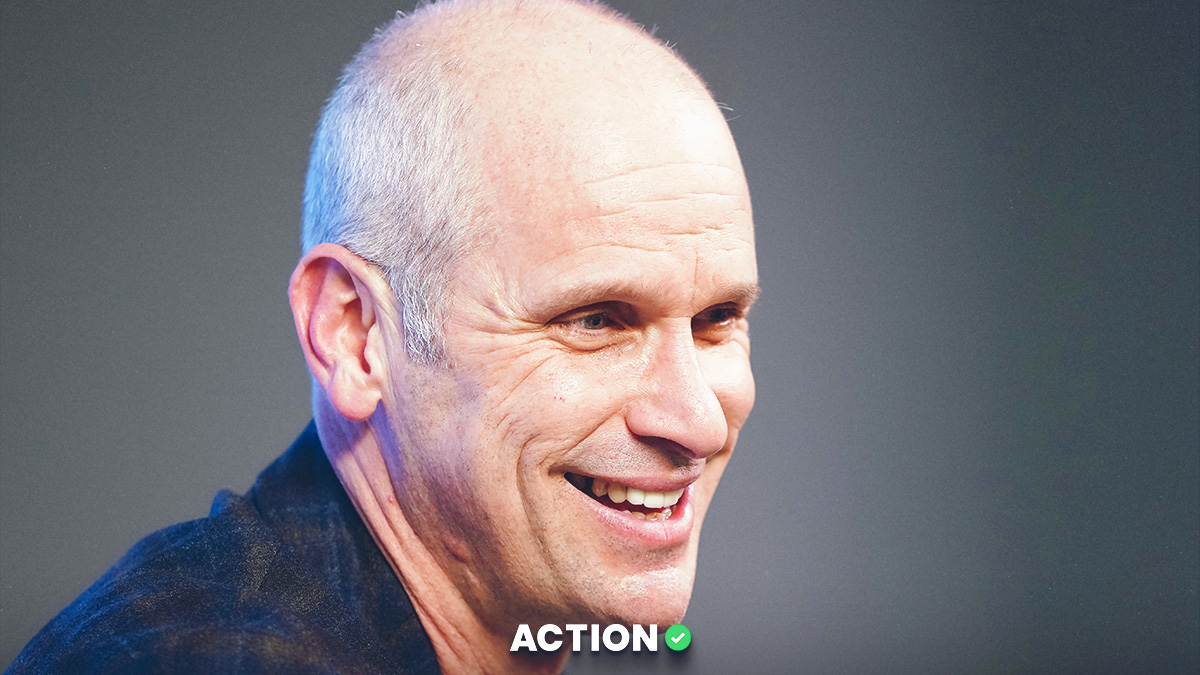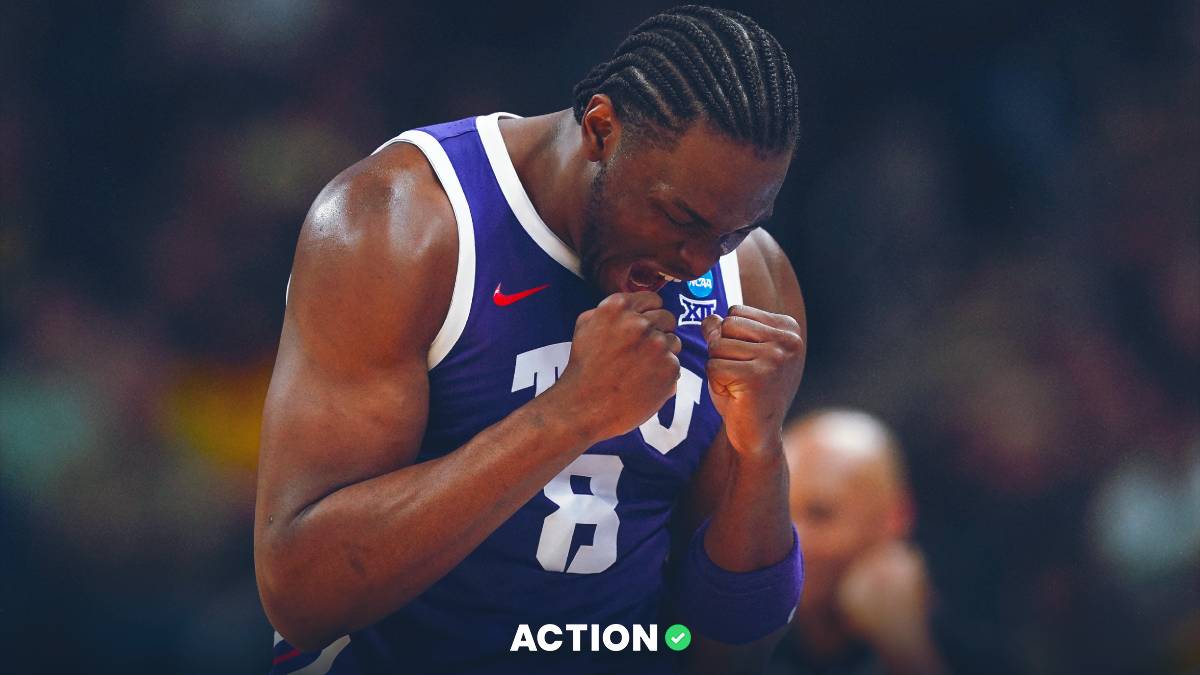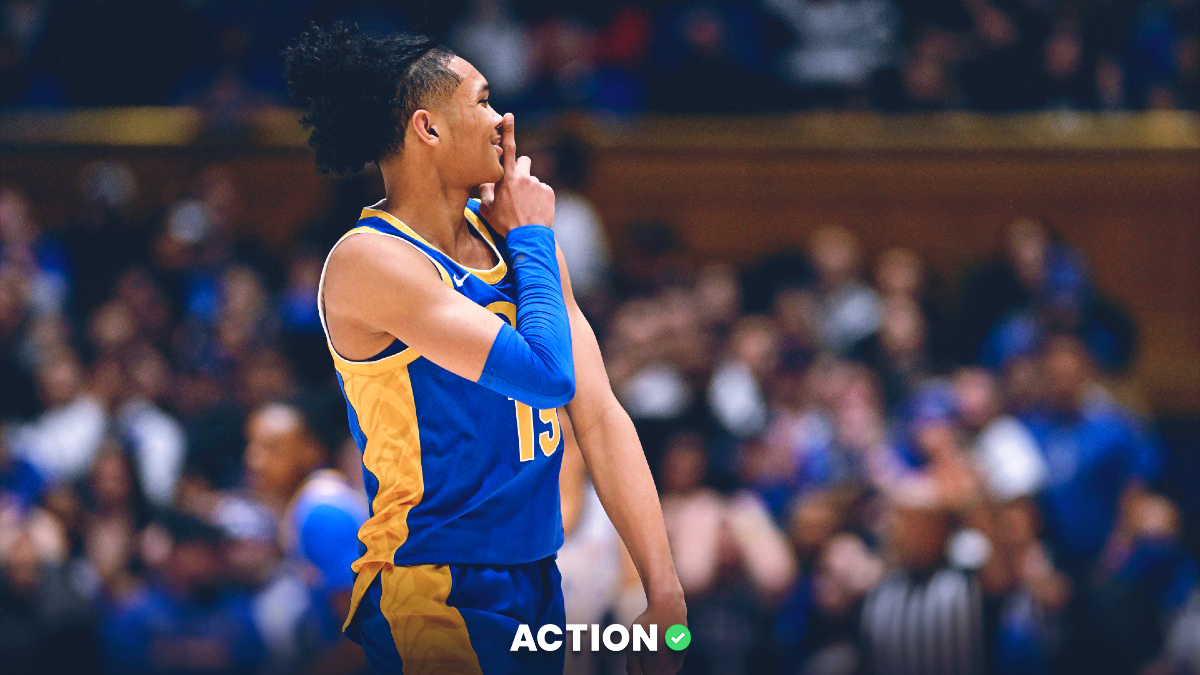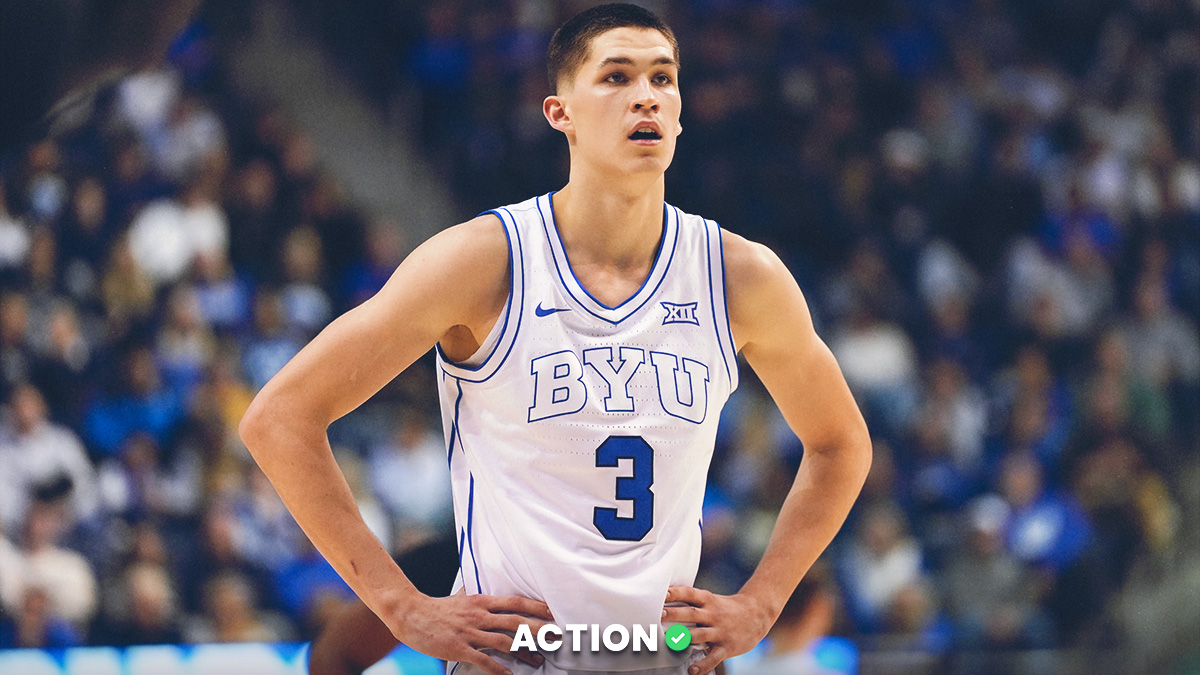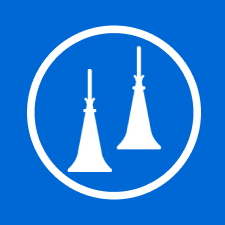The Final Four is finally here.
In a season like 2020-21, that's something that sounds even better than it has any other year. After all, we were robbed of this joy last season. But we're back.
And what's the Final Four without betting?
Mike Randle and Stuckey have broken down their early betting leans for both (1) Baylor vs. (2) Houston and (1) Gonzaga vs. (11) UCLA on Saturday.
While Gonzaga and Baylor looked like the two most dominant teams in the country throughout the early part of the season, they've broken down other bets to look at based on each matchup as well.
#2 Houston vs. #1 Baylor Odds
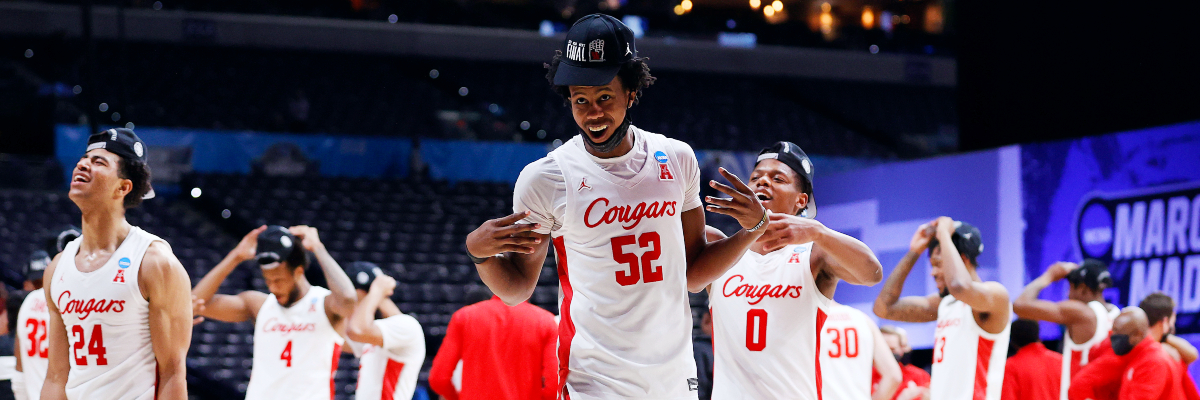 | |
Baylor -5 over Houston:
Mike Randle: It is wonderful to see Houston back in the Final Four for the first time since “Phi Slama Jama” in 1984. The Cougars have advanced through the bracket with superior defense, elite rebounding, and timely offense. Head coach Kelvin Sampson has done a phenomenal job rebuilding the Houston brand and has succeeded despite lacking the explosive fast-break offense that is common among high-profile college basketball programs.
However, its run will come to an end against Baylor this weekend.
Houston has played a far inferior schedule throughout the season. The Cougars rank only 133rd in overall strength of schedule and 157th in non-conference strength of schedule. Houston is 4-1 in Quadrant I wins, but two of those have come in the NCAA Tournament. Their path to the Final Four is one of the easiest in recent memory. They defeated, in order:
- No. 15 Cleveland State, 87-56
- No. 10 Rutgers, 63-60
- No. 11 Syracuse, 62-46
- No. 12 Oregon State, 67-61
Houston has shown weaknesses throughout the tournament, especially when challenged defensively.
The Cougars were stifled by Rutgers, shooting only 37.8% (14-of-37) from 2-point range with 12 turnovers. Their offense was bailed out by late-game 3-point shooting by Quentin Grimes and DeJon Jarreau, who combined to make 7-of-13 attempts (53.8%). The Cougars were also suffocated by Oregon State’s defensive changes, scoring just 26 points in the first 19:08 of the second half.
Houston’s slow pace of play (328th in adjusted tempo) and intense defensive pressure has been problematic for teams that haven’t faced that style all season. It forces 14.3 turnovers per game and ranks third overall with 14.5 offensive rebounds per game.
But Baylor has seen this level of defensive pressure and handled it quite well. Examples?
- Baylor 83, Stephen F. Austin 52: The Bears crushed a Lumberjacks team that ended the year ranked fourth in defensive turnover rate and sixth in offensive rebounding. Adam Flagler (14 points) led five players in double figures. Stephen F. Austin finished 16-5 but was not eligible for tournament play.
- Baylor 68, Texas Tech 60: The Bears earned a tough Big 12 road win against a Red Raiders team that forced Baylor into 16 turnovers. The Bears used their own superior defense to hold Texas Tech to just 42% (16-of-38) from 2-point range, while forcing Texas Tech into 20 turnovers. Davion Mitchell was electric with 17 points, including 3-of-6 shooting from 3.
- Baylor 88, Texas Tech 73: Baylor exploded in the second half for 54 points and shot a blistering 63% (15-of-24) from beyond the arc. The Bears outrebounded the Red Raiders, 40-27, despite Texas Tech ranking 33rd-best in offensive rebounding percentage, per KenPom.
I don’t see how Houston can score enough against the Baylor no-middle defense to keep this game close. The Bears are the third-best team in defensive turnover percentage and rank 23rd with 12.6 offensive rebounds per game.
Baylor has played elite competition all year in the Big 12, with the 50th-toughest strength of schedule.
The Bears have also been superior against the spread. Baylor is 18-10 against the number, including covers in three consecutive games.
The Bears showed vulnerability after the return from a two-week COVID-19 pause, failing to cover against Iowa State, Kansas, and Oklahoma State. But head coach Scott Drew has his team back to its early-season form, as it shot a combined 50% (16-of-32) from deep against Villanova and Arkansas.
The Bears' pressure defense forced a sure-handed Arkansas team into 15 turnovers and will further disrupt a limited Houston offense. I expect the Cougars defense to provide resistance to Baylor’s No. 1 ranked 3-point shooting efficiency (41.1%) but not score enough against the Bears to cover this number.
I’m laying the five points with Baylor and taking the under in a game I expect to follow the Bears' 68-60 win at Texas Tech on Jan. 16.
Stuckey: If you watched the Houston offense this tournament, you might be wondering how the Cougars rank seventh in adjusted offensive efficiency, per KenPom. It's just a unit that can go completely stagnant for long stretches and rely way too much on isolation ball.
Well, the reasons are they don't turn it over (41st in turnover percentage) and they absolutely dominate on the offensive glass, ranking second nationally in offensive rebounding percentage. Just getting a shot to the rim — no matter how poor the quality — usually leads to a positive outcome for Kelvin Sampson's group.
Houston also attempts a high percentage of 3-pointers (53rd in 3PA/FGA). While it isn't the best outside shooting team in the country at 34.9%, that's still a respectable clip, good enough for 113th in the country.
When those shots are falling, the offense is even more lethal. However, when they aren't, Houston will come up with the offensive rebound more times than not.
Defensively, Houston, which ranks No. 1 in effective field goal percentage, just isn't going to let you get anything in the paint. The Cougars also have elite length and athleticism and close out on the perimeter as well as any team in the country.
They rank 11th in 3-point defense, holding opponents to 29.2% from beyond the arc. And that's no accident or result of single-season variance, as they finished eighth and first in that same category the past two seasons.
It's an extremely aggressive defense that will force a lot of turnovers but also foul frequently, which is really the only weakness of this suffocating unit.
So, how does Baylor match up? Well, Baylor also tries to take away everything at the rim with its no-middle defense. It's also a very aggressive unit that forces turnovers at the third-highest rate nationally.
On the other side of the ball, Baylor ranks No. 1 in the nation in 3-point shooting at a ridiculous 41.1%. It has an abundance of shooters and slashers for an extremely well-balanced offensive attack.
There are some positive signs on paper for Houston from a matchup perspective:
- Baylor's aggressive defense does leave it vulnerable to offensive rebounds — the Houston specialty. On the season, Baylor ranks 273rd in defensive rebounding percentage.
- I mentioned Houston does foul a lot, but Baylor doesn't really draw many fouls, ranking 295th in FTA/FGA, per KenPom.
- Houston takes very good care of the ball, which is a must against the Bears.
- The Cougars have an elite 3-point defense, which is also critical against Baylor.
That said, this Baylor team just has way too much talent and balance.
Houston is no doubt elite defensively, but the Baylor offense is on a different level. I don't think either team will get much in the paint, so this one will likely be decided by which team can more efficiently hit outside jumpers. And for my money, I'll take the Baylor perimeter all day in that regard. I think you'll end up seeing many more inefficient 2-point jumpers from Houston than Baylor.
While I won't necessarily be joining Randle pregame since I make this line right around five, I will likely have Baylor in a moneyline parlay or two and will be on the hunt for the Bears live (or for the 2H) at -3 or better.
All of the metrics and my own eyes are telling me Baylor is back to the pre-COVID squad that I had power-rated neck-and-neck with Gonzaga for most of the season.
From a total perspective, I show a minuscule amount of value on the over but not enough to wager, especially since I don't have a strong feel as to how this will play out from a pace perspective between a Houston team that wants to grind everything to a halt (328th in adjusted tempo) and a Baylor team that ranks 186th in that same category and has no issues getting out and running in transition when the opportunity presents itself.
#11 UCLA vs. #1 Gonzaga Odds
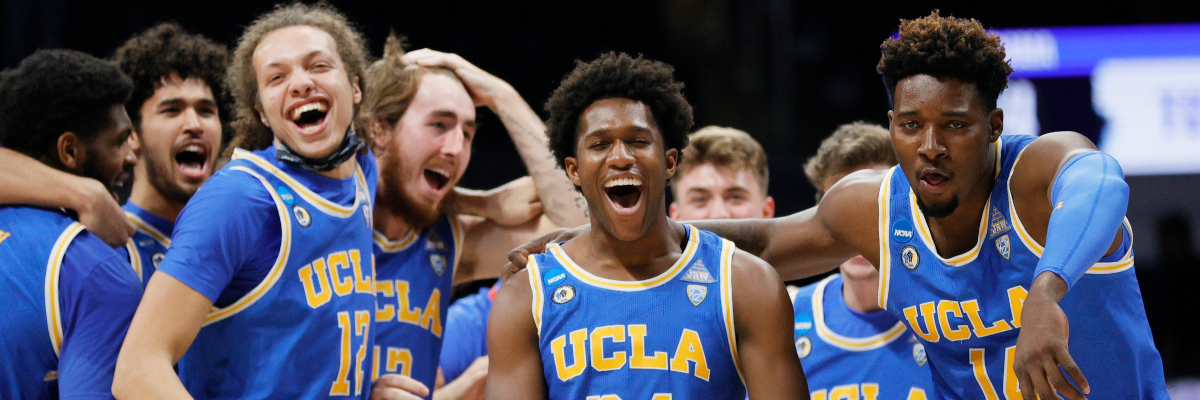 | |
Gonzaga -14 over UCLA
Mike Randle: UCLA head coach Mick Cronin has done a marvelous job on this unlikely run to the Bruins. It was not long ago that the Bruins were down, 44-33, at the half to Michigan State in their First Four matchup.
UCLA rallied for an 86-80 OT victory behind Jaime Jaquez and Johnny Juzang’s 50 combined points. The Bruins had produced brilliant defensive performances in consecutive wins over No. 2 seed Alabama and No. 1 seed Michigan. The Bruins held both teams to 25.6% (10-of-39) from 3-point range.
However, Gonzaga is unlike any offense the Bruins have faced this season.
In the Elite 8, Gonzaga dismantled a USC defense that entered with the best 2-point efficiency mark in history.
Per @kenpomeroy:
Gonzaga's 2P Offense? 63.9% (1st)
USC's 2P Defense? 41.5% (1st)Getcha popcorn ready pic.twitter.com/LvaZkFa59B
— Mike Randle (@RandleRant) March 29, 2021
The Bulldogs jumped out to a 27-12 lead after 10 minutes and never looked back. Gonzaga shot 57.8% (26-of-45) from 2-point range against statistically the best 2-point defense in history.
Think about that.
The Bulldogs will again rely on the superb play of forward Drew Timme. The 6-foot-10 sophomore now leads the Zags in scoring (19.1 PPG) and rebounds (7.2 RPG), while shooting an uber-efficient 65% from the field. He has averaged 25 points and 7.3 rebounds over the past three games, highlighted by an impressive 23-point performance against the Mobley brothers on Tuesday night.
While first-team All American and WCC Player of the Year Corey Kispert (18.9 PPG, 5.1 RPG, 45.3% 3P) has been fantastic all season, the Zags have gone to a different level with a more assertive Jalen Suggs.
The superior freshman is playing his best basketball of the year, and has increased his averages to 14 points, 5.5 rebounds, and 4.5 assists per game. Suggs almost reached a triple-double against USC, finishing with 18 points, 10 rebounds, and eight assists in a dominant performance.
Head coach Mark Few has built a roster that scores regardless of pace. On Dec. 26, the Bulldogs crushed Virginia, 98-75, shooting 66% from 2 and 50% from 3 against one of the top defenses in the country. Their offense is so versatile that it takes a superior defensive effort to limit their scoring.
UCLA’s defense has been outstanding in the tournament, but it will struggle to limit Timme’s interior scoring and the Bulldogs' 3-point prowess.
UCLA 6-foot-9 junior Cody Riley (9.8 PPG, 5.2 RPG) will have the primary responsibility of limiting Timme, but he has been plagued with foul trouble through the second half of the season.
Riley played only 18 minutes against Michigan, with the Bruins seeing unlikely efficiency from sophomore forward Kenneth Nwuba (0.1 PPG, 1.1 RPG). Nwuba played a season-high 20 minutes and contributed five rebounds but zero points.
The Bulldogs rank fifth-best in overall defensive efficiency and limit their opponents to 31.9% from 3 and 46.5% from 2.
While both Juzang (15.5 PPG, 35% 3P) and Jaquez Jr. (12.1 PPG, 39.3% 3P) have carried the scoring for UCLA, they will likely be limited by Gonzaga’s underrated perimeter defensive length and depth. The Bulldogs can deploy Suggs, Joel Ayayi, Andrew Nembhard, and Aaron Cook on a rotational basis to limit the Bruins' scoring.
There are too many weapons and too many variables for the overachieving Bruins to stop.
I’m laying the big number with Gonzaga and backing the under at 145 points. The Bulldogs will score in a variety of ways, and their defense will stifle the Bruins offense.
I expect a comfortable 20-point win for Gonzaga, somewhere in the range of an 80-60 final score.
Stuckey: I told myself prior to the tournament that I will not get in front of this Gonzaga train until a potential national title matchup with Baylor. To reiterate Mike's point above, Gonzaga is an offensive juggernaut, ranking first in adjusted efficiency, effective field goal percentage and 2-point percentage, per KenPom.
The Zags run a beautiful ball-screen based offense with precise cutting and flawless ball movement. They have three players who were in the discussion for Player of the Year in point guard Jalen Suggs, sharp-shooter Corey Kispert and big man Drew Timme. Oh, and don't forget about Joel Ayayi and Andrew Nembhard, who seem to fit like a glove with the big three in Mark Few's offense.
There really are no flaws with this offense, which ranks 34th in rim-and-3 rate but isn't reliant on the 3-point shot (278th in 3PA/FGA). Gonzaga takes the third-highest frequency of shots at the rim and leads the country with an obscene 72% on those attempts. The Bulldogs usually end their possessions with a layup as we saw against the top 2-point defense in the country in USC last time out.
I'm certainly not changing my tune now and fading Gonzaga against a UCLA team that has had Lady Luck on its side to get to this point in the tournament.
Take a look at these 3-point shooting splits through five games of the tournament:
- UCLA: 37-of-98 (37.7%)
- Opponents: 23-of-93 (24.7%)
And it's not like the Bruins faced a bunch of poor 3-point shooting teams. Only Michigan State ranked outside the top 101 nationally in that category this season. From a pure shot quality perspective, the Bruins have only had a marginally higher chance of getting to this point as winning five straight coin flips — and that's with two blowout wins.
UCLA had a 4% chance of making the final four based on the quality of shots they got and let up in each game! pic.twitter.com/S2ntuMBJm6
— ShotQuality (@Shot_Quality) March 31, 2021
Plus, I didn't even mention the opponent free-throw shooting over the past two games. Michigan and Alabama combined to go 17-of-36 from the charity stripe (47.2%) in games the Bruins won in overtime and by one possession. That's nothing more than pure dumb luck.
The UCLA offense is way too reliant on 2-point jump shots and goes through way too many droughts to keep up with the Gonzaga juggernaut.
That said, this is a confident offensive unit with tough shot makers that can schematically create enough mismatches to keep Gonzaga at least interested for most of the game. The Bruins will get some open 2-point jumpers at the top of the key area, and Riley can have some success in the post.
It will be interesting to see what Cronin does from a scheme perspective to try to slow down the Gonzaga offense. These are two polar opposites in regards to pace, as UCLA is a snail and Gonzaga is a speed racer.
I'm sure the Bruins will try to keep Gonzaga out of transition, but I'm just not sure that's possible.
UCLA does rank in the 92nd percentile in points per transition possession (27th overall), per Synergy. However, this Gonzaga offense might be the best transition offense of all-time. It had no issues against other top-100 transition defenses (BYU, USC, Santa Clara and put up 98 points against a Virginia team that plays at the slowest-tempo in the country (and allows the third-fewest transition opportunities).
Will it utilize more zone or go under every screen? I'm sure Mick will pull out all of the stops, but I don't see many paths to success.
It's no surprise that I think the line is pretty fair, as I make it Gonzaga -14.7. It's tough to find spread value this late in the year when the market becomes super efficient.
Therefore, I have no interest in getting involved pregame. However, this Gonzaga team just continues to find ways to cover, so maybe I'm still not rating them high enough. In some ways, it reminds me of the LSU football team that won the national title two years ago with Joe Burrow. The market could just never catch up with its dominance.
So, while I won't be joining Randle on Gonzaga -14, I think it's either Gonzaga or nothing from a pregame spread perspective.
Where I do disagree is in regards to the total. I actually see slight value in the over — although not enough to pull the trigger unless we get back under 145. Unlike Randle, I actually think the UCLA offense can have some success here with certain matchups when Timme is on the floor.
My strongest recommendation if you are looking for something here would be Gonzaga team total over 79.5 (anything under 80). If the outside shots are falling (and a UCLA opponent is certainly due to go crazy against a vulnerable perimeter defense), Gonzaga should get to 80 once again, especially if UCLA can keep it interested.
We did see Washington State and Oregon both eclipse that mark against the Bruins in regulation during Pac-12 play when their outside shots were falling.
One minor concern worth noting is potential UCLA fatigue.
It's not a deep team right now, and its starters have played 204 more minutes than the Gonzaga starters. It's possible legs become an issue in the second half in a faster-paced game in its third game of the week.


